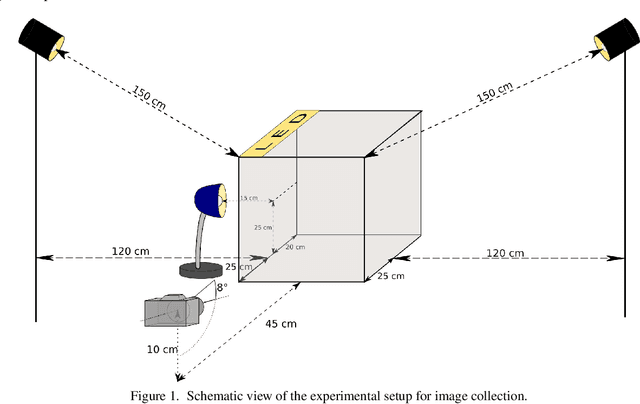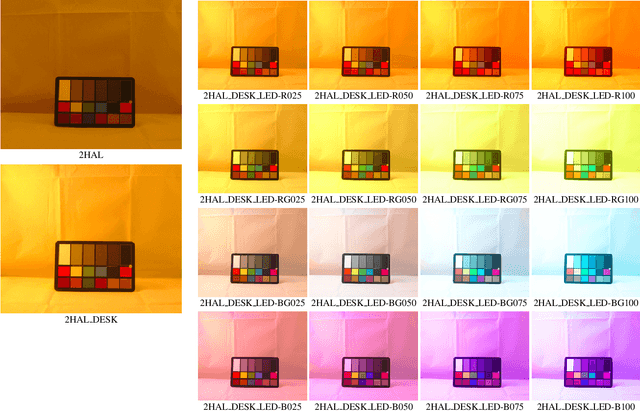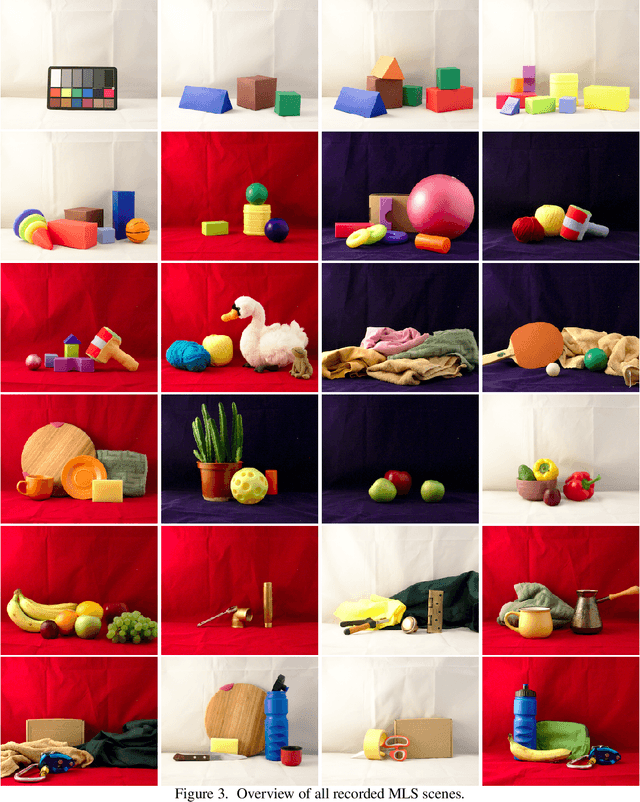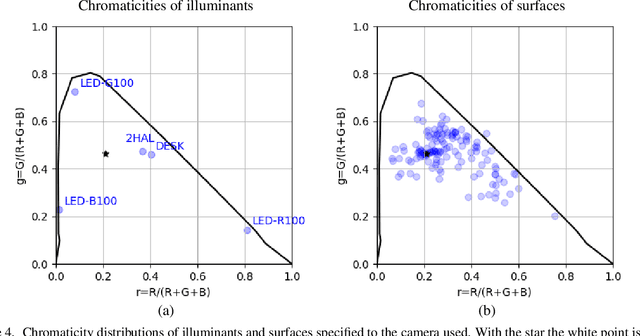Anna Smagina
Multiple Light Source Dataset for Colour Research
Sep 16, 2019



Abstract:We present a collection of 24 multiple object scenes each recorded under 18 multiple light source illumination scenarios. The illuminants are varying in dominant spectral colours, intensity and distance from the scene. We mainly address the realistic scenarios for evaluation of computational colour constancy algorithms, but also have aimed to make the data as general as possible for computational colour science and computer vision. Along with the images of the scenes, we provide spectral characteristics of the camera, light sources and the objects and include pixel-by-pixel ground truth annotation of uniformly coloured object surfaces thus making this useful for benchmarking colour-based image segmentation algorithms. The dataset is freely available at https://github.com/visillect/mls-dataset.
Linear colour segmentation revisited
Jan 02, 2019Abstract:In this work we discuss the known algorithms for linear colour segmentation based on a physical approach and propose a new modification of segmentation algorithm. This algorithm is based on a region adjacency graph framework without a pre-segmentation stage. Proposed edge weight functions are defined from linear image model with normal noise. The colour space projective transform is introduced as a novel pre-processing technique for better handling of shadow and highlight areas. The resulting algorithm is tested on a benchmark dataset consisting of the images of 19 natural scenes selected from the Barnard's DXC-930 SFU dataset and 12 natural scene images newly published for common use. The dataset is provided with pixel-by-pixel ground truth colour segmentation for every image. Using this dataset, we show that the proposed algorithm modifications lead to qualitative advantages over other model-based segmentation algorithms, and also show the positive effect of each proposed modification. The source code and datasets for this work are available for free access at http://github.com/visillect/segmentation.
 Add to Chrome
Add to Chrome Add to Firefox
Add to Firefox Add to Edge
Add to Edge